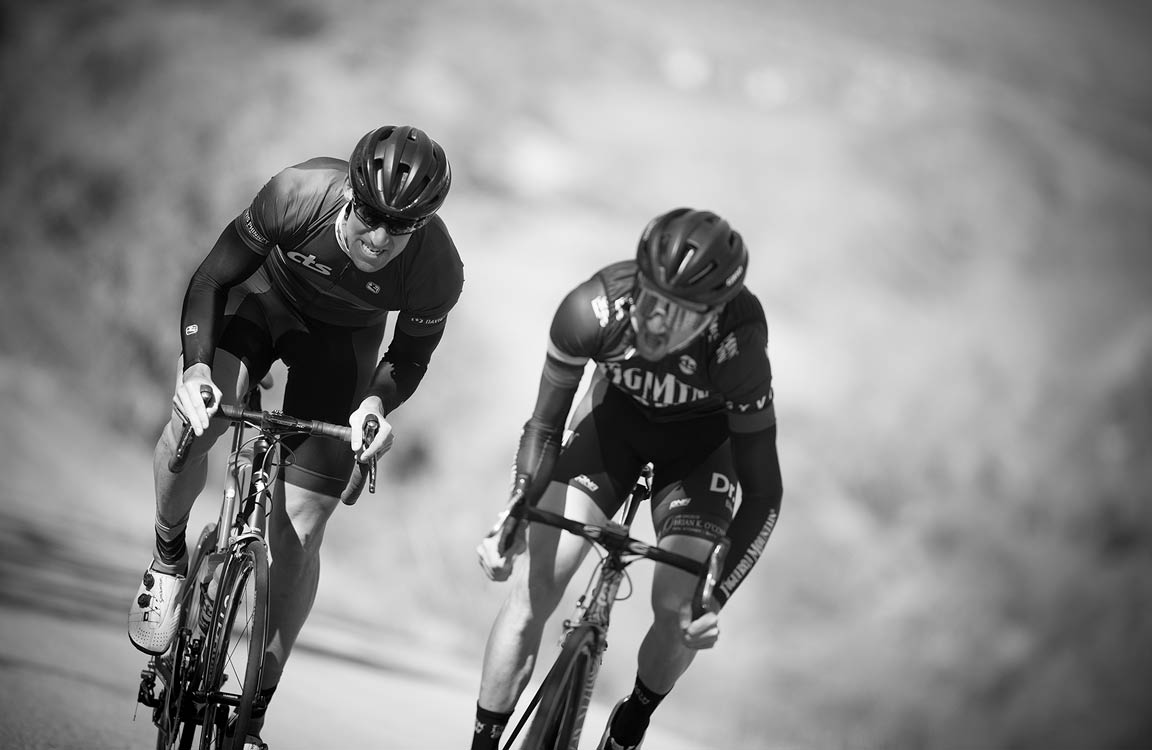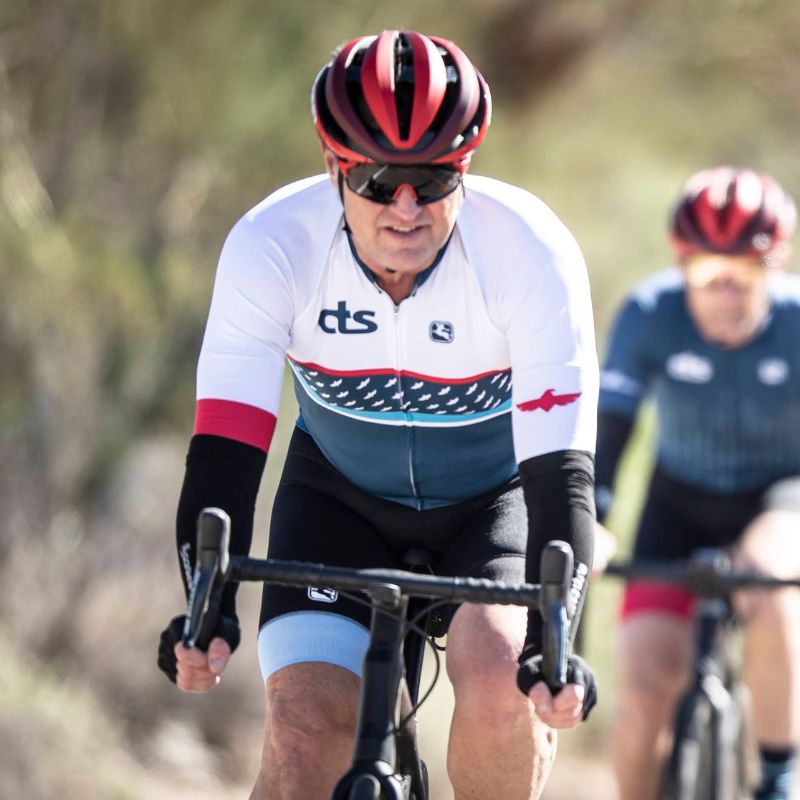
TDF and You: The Strategy and Training Behind Winning Sprints
By Chris Carmichael
The first week of the Tour de France is traditionally the time for the pure sprinters to shine. This year, however, the organizers have added specific challenges that have made it more difficult for the sprinters to prevail. Instead of long, straight, and flat finishing stretches, the first stage was an uphill sprint, Stage 2 was the team time trial, and Stage 4 as the first time we really saw a traditional bunch sprint. Different sprint finishes present their own challenges and suit slightly different approaches.
Uphill Sprints
Like anything uphill, these sprints are very difficult, and they are also very different than sprinting on flat ground. The starting speed for an uphill sprint is typically slower than for a straight-line, flat-ground surge for the line. This works in favor of athletes with explosive power and a great jump. Smaller riders who may not have the peak power output to compete with thundering herd of field sprinters can gain an advantage over their heavyweight competitors in these uphill finishes.
Take Stage 1 of this year’s Tour de France. There was a short descent leading into the finale, but then the last surge to the finish line was an uphill drag. Jumbo-Vismo’s Dylan Groenewegen was one of the pre-stage favorites and the designated sprinter for his team, but he was involved in a crash at 2 kilometers to go. His leadout man, Mike Teunissen, was in position near the front and in an instant turned from leadout to sprinter. In the finale uphill drag to the line, he was up against two other sprinters known for explosive uphill finishes: Peter Sagan (Borah-Hansgrohe) and Caleb Ewan (Lotto Soudal).
One of the most important things to remember about uphill sprinting is to keep it short. After your initial acceleration, it is very difficult to maintain your top sprinting speed very long in an uphill sprint. As a result, you have to be patient and wait until you are closer to the finish line to launch your final surge for the line. As we saw in Stage 1, Team Sunweb’s Michael Matthews launched only about 300 meters from the line, but he still got swarmed and fell all the way to 6th.
The best workout for developing the power for uphill finishes focuses on specificity. I recommend HillSprints. Find a short, steep hill that has a flat run-in to the base. For the workout you want to come into the hill at a high rate of speed (20-22mph), wait until you feel the gradient bite into your momentum and start to add resistance, and then with your hands in the drops, jump out of the saddle and sprint for 15 seconds. Recover for 5 minutes by spinning easily, and then repeat. It’s important to give yourself plenty of recovery between sprints in order for each effort to be effective. Beginners should do four sprints, intermediate riders 6 sprints, and advanced riders should do 10 sprints (and advanced riders may want to break this into two sets of 5 with a longer recovery period – like 15 minutes – between sets).
Flat Sprints
Sprints on flat ground start at incredibly high speeds and get faster from there. As a result, they require massive amounts of power and that’s why the bigger riders like Alexander Kristoff, Dylan Groenewegen, and Elia Viviani are more successful than smaller riders who may also have plenty of explosive power.
Leadouts are crucial for flat finishes because the sprinters need support riders to keep the speed as high as possible before they launch their final acceleration. The high speed also strings the field out into a long line, eliminating most riders from contention. This not only reduces the number of athletes who have a legitimate chance of winning, but it also keeps everyone safer. When flat sprint stages lack a high-speed leadout, the peloton swarms across the road and the chances of a crash increase dramatically.
► Free Cycling Training Assessment Quiz
Take our free 2-minute quiz to discover how effective your training is and get recommendations for how you can improve.
Head and tailwinds have a big impact on flat sprint finishes. If there’s a headwind in the final straightaway, you have to treat the sprint almost like an uphill finish and keep your final acceleration short. When you come off the wheel of your leadout into a strong headwind, the resistance is so great that you don’t accelerate to as high a maximum speed and you also start to slow down sooner. If there’s a tailwind going into a sprint, you often have to launch your final acceleration further from the line so that you don’t get swarmed by riders behind you.
There are two workouts that I think are crucial for cyclists looking for success in flat-ground sprints. The first is a HighSpeedSprint. Since most of us don’t have access to motorpacing or a leadout train, the easiest way to practice sprinting from a high starting speed is to do downhill sprints. Find a straight road that is slightly downhill (1-3%, not 6-8%). Roll into the sprint at 23mph or faster so you’re already pedaling fast (100+rpm) in a big gear (53×14-15 or even bigger). With your hands in the drops, jump out of the saddle and sprint at hard as you can for 20 seconds. Spin easy for 5 minutes for recovery between sprints. Beginners should do four sprints, intermediate riders 6 sprints, and advanced riders should do 10 sprints (and advanced riders may want to break this into two sets of 5 with a longer recovery period – like 15 minutes – between sets).
In flat-ground sprints, you typically have to accelerate hard at least once before your final surge for the line. In the final kilometer – whether it’s the Tour de France or your local criterium – you have to jump hard to respond to accelerations or move into a better position, then wait for a few seconds, and then launch your final sprint. To practice this in training, I recommend LinkedSpeedIntervals. Think of it as a three-stage sprint: roll into it at 20-22 mph with your hands in the drops, cadence around 90-95 and a gearing of 53×15 (or similar if you’re riding a compact crankset). Jump out of the saddle and sprint for 10 seconds. Sit and continue to ride at maximum effort for a count of 5 (just count in your head, this is no time for looking at computers). Then shift into one harder gear, jump out of the saddle and sprint again for 10 seconds. Now sit and keep riding at maximum effort for a count of 5 before shifting into one harder gear and sprinting again for 15 seconds. Spin easy for 5 minutes between efforts. Beginners should complete 4, intermediate riders 5, and advanced riders 8 of these intervals. If you bog down in the gears, especially for the last of the three sprints, start the efforts in a lighter gear.
A successful sprinter has to be able to read the finish and adjust his strategy very quickly. Gone are the days when a dominant sprint team could control the front of the race with a long-range leadout. Today you’re more likely to see 2-4 leadout trains in the final four kilometers, which has the effect of letting more riders stay near the front of the field and in contention to sprint. The end result favors savvy and opportunistic sprinters over pure straight-line drag racers. For amateur racers and club riders sprinting for the city limit sign, it’s rare you’ll have the benefit of a full-on organized leadout. Rather, you have to freelance and pick a fast wheel to get behind at the beginning and then be ready to follow another wheel or two before finally launching your own bid for the win.
► FREE Mini-Course: Learn How to Maximize Your Limited Training Time
Learn step-by-step how to overcome limited training time and get faster. Walk away with a personalized plan to increase your performance.
"*" indicates required fields

